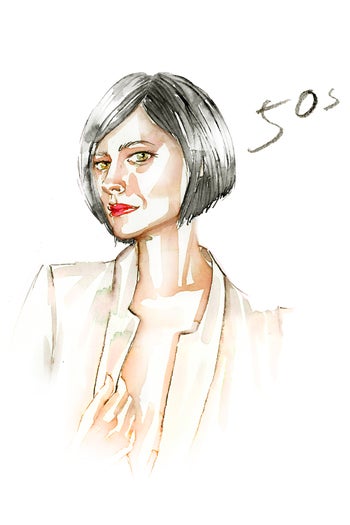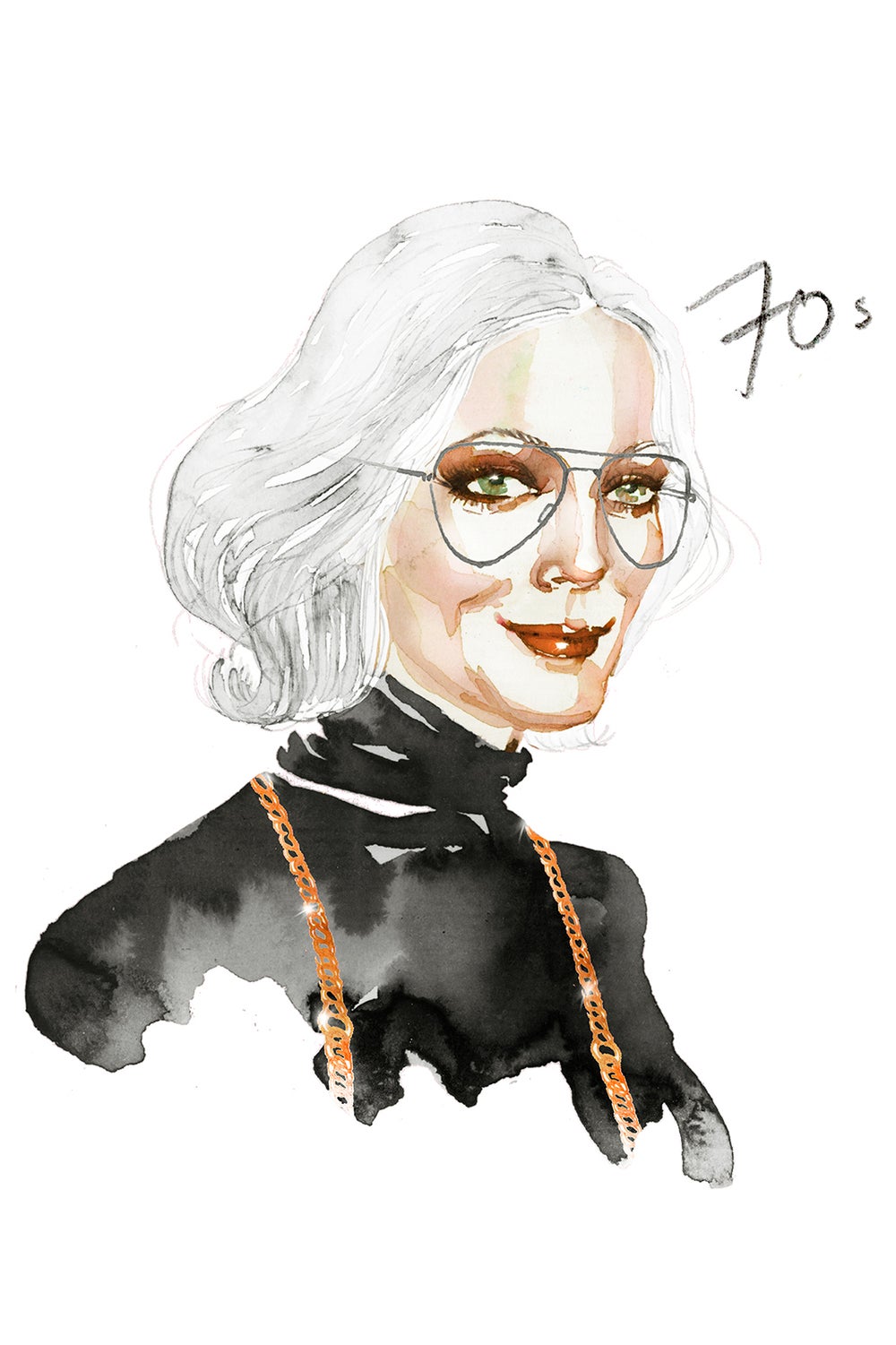This article was last updated on April 16, 2022
Canada: ![]() Oye! Times readers Get FREE $30 to spend on Amazon, Walmart…
Oye! Times readers Get FREE $30 to spend on Amazon, Walmart…
USA: ![]() Oye! Times readers Get FREE $30 to spend on Amazon, Walmart…
Oye! Times readers Get FREE $30 to spend on Amazon, Walmart…
They say you should put your best foot forward, but we think that slogan is misleading — who’s looking at your feet for a great first impression? Your face is the body part that you should be leading with. Problem is, putting your best face forward is easier said then done when everything from the environment to genetics is conspiring against you.
As you age, your skin will undergo a plethora of changes, from texture shifts to pigmentation issues. Sadly, there’s no magic potion out there that can stop these changes from happening — nor do we think you should constantly be on a quest to eradicate every last sign of aging. It’s impossible and you’ll drive yourself bonkers trying to banish all of these “flaws.”
To us, aging gracefully means taking the absolute best care of what you have, and ensuring that you’re happy and confident with it. Which is why we polled three of the top skin docs in the country for their tips on how to tend to your skin now, and what you can do to maintain it as you age. From your 20s right on through to your 70s and beyond, we got the scoop on your ideal skin care routine, best practices, and most effective ingredients for ensuring you have the complexion of your dreams, at every age.
Read on for our everything guide to achieving your best skin now, and through every stage of your life.

In Your 20s
Each of the derms we spoke to said that your goal in this decade is all about prevention — taking diligent care of your skin now means far fewer problems ahead for your future face. The big one here is, you guessed it, sunscreen. “Sun protection should be a part of your daily routine,” says Dr. David Colbert, leading dermatologist at the New York Dermatology Group, founder of Colbert M.D.skin care, and author of The High School Reunion Diet.
Another common issue in your 20s is that scourge known as adult acne. “Your hormones play a larger role in adult female acne,” says Dr. Meghan O’Brien, consulting dermatologist for Physicians Formula. “Another hormonally mediated skin concern that can start in the 20s is melasma, or brown patches on the skin that become darker with sun exposure,” she adds.
Your ideal skin care routine: Dr. O’Brien says that for acne and for general skin care, washing your face twice daily is important. If you have dry skin, grab a cream cleanser, while oily, acne-prone types should choose something that fights oil and breakouts. Follow that up with a super-light moisturizer and an SPF 30, if your moisturizer of choice doesn’t already have one in it. If you’re at the beach or plan to be out in the sun for an extended period of time, Dr. Colbert says to up that SPF to a 60. At night, it doesn’t hurt to use a night cream, but according to Dr. Colbert, there’s no need to waste your hard-earned $$$ on anti-aging creams: “In your 20s, those fancy creams are just icing on the cake,” he says. “Focus on wearing sunscreen, hydrating, and not destroying your skin with sun, alcohol, and bad diet choices.”
Ingredients to stock up on: Salicylic acid, to help fight off hormonal breakouts; soy and kojic acid, to help brighten minor pigmentation issues; broad-spectrum (i.e. UVA and UVB) protection; and shea nut oil and vitamin C, to hydrate.
Avoid at all costs: Invasive surgeries and procedures, says Dr. Howard Sobel, attending dermatologist and dermatological surgeon at Lenox HIll Hospital, and creator of DDF skin care. “There’s plenty of time for that later in life,” he says. Adds Dr. Colbert, “Avoid resurfacing lasers, unless you are trying to treat acne scars. Your big guns at this age are prevention, not treatment. Just do your thing and be beautiful.”
In-office treatments to try: Chemical peels, says Dr. O’Brien, can help brighten the skin and improve pigmentation.
If you do nothing else: All three derms say slather on sunscreen. “SPF is the most important anti-aging piece of the skin care regimen that I recommend,” says Dr. O’Brien. We don’t know how many times we have to repeat this, but no anti-aging cream is going to give you the type of results down the road that wearing sunscreen now will. So stop whining, and slap on a coat of SPF 30. Now, was that so bad?

In Your 30s
The good news: Your acne will usually subside by this stage in your life (yay!). The bad news: It’s because your skin is starting to dry out (boo!), says Dr. Sobel. You’ll also start seeing more hyperpigmentation, fine lines, sun spots, and darker circles under your eyes. Additionally your skin will start to feel less smooth and your pores will become more enlarged, adds Dr. Colbert.
“By the time you reach your 30s it’s time to take a good look at your diet,” says Dr. Colbert. “You are what you eat. Every food that you eat will show straight through your skin, so stop consuming sugars and processed foods. Add kale, greek yogurt, almonds, blueberries, olive oil, and white fish to your daily diet and watch your midsection shrink while your skin starts to glow.”
Your ideal skin care routine: Cleanse twice a day and use a toner to firm your skin, minimize those pores, and keep them from clogging up. Exfoliate 3-5 times a week to remove dead skin cells and be sure to keep wearing that sunscreen every day. Dr. Colbert recommends a higher SPF and a moisturizer with potent antioxidants. At night, use a heavier night cream, plus retinol a few times a week.
Ingredients to stock up on: Retinol, to help rev up your skin’s collagen production; hyaluronic acid, to soften the skin and fill in crow’s feet and fine lines; potent antioxidants like goji berry and vitamin C, to help combat the visible effects of fatigue (and your undoubtedly more stressful life); and glycolic acid, to dissolve the build-up of dead skin cells and refresh your skin.
Avoid at all costs: Using too many products at once, like glycolics, retinoids, and peeling agents, says Dr. Sobel. “Don’t think more is better — it will actually just wind up irritating your skin,” he says. Dr. Colbert also cautions cleansing brush enthusiasts to take it easy: “Your Clarisonic may feel good, but if you’re using it every day, you’re drying out your skin and then you are forced to play catch-up with your moisturizer.”
In-office treatments to try: If you’ve been toying with the idea of Botox, now may be the time to take the plunge — Dr. O’Brien says, used sparingly, it can help to prevent the deepening of dynamic wrinkles. Dr. Sobel suggests Fraxel, to minimize sunspots on the neck, chest, and hands, while Dr. Colbert is a fan of microdermabrasion, laser toning, and fruit acid peels to tighten, smooth, and add a youthful glow.
If you do nothing else: Go see a derm, says Dr. Colbert. “If you haven’t been to a dermatologist yet, make your first trip,” he says. “Your 30s is the time to start to plan out your face, so you don’t end up 50 and wishing you’d done something.” Dr. O’Brien also notes that you need to step up your skin care routine at home. “If you start treating your skin concerns early (a.k.a. now), you won’t be overwhelmed by them in your 40s.”

In Your 40s
“This is the time when women really go on the defensive about aging,” says Dr. Colbert. “Jowls, wrinkles, large pores: Everything appears in your 40s.” Pigmentation will also get worse and there will be a loss of overall skin elasticity that will be most pronounced around your eyes.
Menopause, which can occur in your late 40s, is going to cause your hormones to go nutty. This means even more dryness and, for some, a specific type of acne called perioral dermatitis. Joy.
Your ideal skin care routine: Use a hydrating cleanser twice a day, followed by a treatment serum with time-released ingredients. “You need to treat and give your skin extra protection all day long, not just at night, so you want something that if you put it on in the morning, there will still be some benefits left at night when you go to put on your night cream,” says Dr. Colbert. Follow your serum with a moisturizer that contains, you guessed it, SPF. Dr. Colbert is also a big fan of facial oils for this age group and older. “The reduction of sebaceous oil is a big deal — your skin loses its ability to hold onto moisture in the skin, which is why facial oils are really impressive and important,” he says. He suggests using them at night, prior to applying your moisturizer.
Ingredients to stock up on: Retin-A and alpha-hydroxy acids, to stimulate collagen production; aloe and chamomile, to hydrate and soothe; and essential oils of yangu, marula, and passionfruit, to rehydrate skin and seal in moisture.
Avoid at all costs: Since your skin is really starting to dry out, steer clear of any products that are going to irritate or cause further dryness. This can include acne-fighting products and many chemical exfoliators.
In-office treatments to try: Lasers are your new best friends in your 40s. Dr. Colbert likes the Ulthera ultrasound laser for tightening, and the V-Beam for broken capillaries, while Dr. Sobel suggests the Fraxel to banish hyperpigmentation. Dr. O’Brien says Botox, to help treat those lines caused by repeated muscle movements (hello, frown lines), can also make a big difference.
If you do nothing else: Do something for your skin, says Dr. Colbert. If you’ve been a strict soap-and-water girl, this is the age when that’s just not going to cut it anymore. Start incorporating treatment and protective products into your routine now, or it’s all just going to go downhill (literally) from here.

In Your 50s
We’ve got one word for you: Sagging. Yup, this is the age when gravity finally catches up with you, as your skin elasticity and collagen degrades further and causes a whole array of fun side effects like jowls, loose skin, “turkey neck,” and smile lines. If you were diligent with that sunscreen, this laxity might not be quite so advanced, and you may fare better with wrinkles and hyperpigmentation. In addition, redness and blotchiness may also be on the menu for you.
Your ideal skin care routine: Cleanse twice daily with a super-hydrating face wash, followed by a facial oil, a retinoid, an antioxidant-rich moisturizer, and an SPF. At night, says Dr. Colbert, you need to be more aggressive in your treatment than you were in your 40s. Increase your Retin-A use to every night, instead of just three times a week and consider using a higher strength. Apply your facial oil and a rich night cream to lock in moisture and boost your skin’s oil levels. “You lose water and you use more oil as you age,” says Dr. Colbert, “so people start using oil or add more hydration, but you need to do both to balance the levels out.”
Ingredients to stock up on: Prescription retinoids, to help keep that collagen and elastin production churning; light facial oils, to seal in that moisture; vitamin C, to protect the skin; growth-factor peptides, to stimulate collagen; and 10%-15% concentrations of glycolic acid, to help increase the absorption of retinoids.
Avoid at all costs: Too much surgery, says Dr. Sobel. Try non-invasive procedures like lasers and peels first. Adds Dr. Colbert, “Don’t over treat yourself at home. People get really haphazard with at-home peels and they don’t know what they are doing, so they wind up injuring themselves. Put the brakes on and educate yourself on these products and the correct way to use them. And remember that at-home options are never as good as what you are going to get in the dermatologist’s office.”
In-office treatments to try: Volume loss is a big concern at this age, which is where dermal fillers like Restalyne, Juvederm, Sculptra, and Radiesse come in. When used sparingly, they can help fill out hollows and add lost vitality back into your skin. Dr. Colbert also likes a PRP treatment, a.k.a. the vampire facial. “It reintroduces growth factors back into your skin and stimulates more collagen and elastin — the more you have of those, the dewier your skin looks,” he says.
If you do nothing else: Don’t forget your neck, says Dr. O’Brien. “If you’ve focused on your face but forgotten your neck, it will age you.” She suggests a neck-specific cream designed for skin laxity.

n Your 60s
All those issues that started to manifest in your 50s are going to continue to happen, but at a more pronounced rate. This is also the time when precancerous lesions or skin cancer is most likely to manifest. Vertical lip lines will become more noticeable — and not to mention, a significant loss of volume in your lips is likely to happen. Lovely.
Your ideal skin care routine: Cleanse your skin twice a day with a super-gentle cleanser, then apply your antioxidant, facial oil, and SPF (yes, you still need to use that). Use your Retin-A nightly, followed by your facial oil, and add a really rich night cream to your routine to help maintain the skin’s barrier function.
Ingredients to stock up on: Antioxidant borage seed oil, to help skin get its glow back; hyaluronic acid, to fill in lines; shea nut butter, for deep hydration; retinoids, to stimulate collagen; and glycolic acid, to speed cell turnover.
Avoid at all costs: “Being a beauty ostrich,” says Dr. Colbert. “Get your head out of the sand and go to your dermatologist to correct any of those things that are really bothering you. The days of stigma for having cosmetic procedures done is gone. If you have issues with your skin that you want to address, talk to your dermatologist about your options because more often than not, you can easily change those things.”
In-office treatments to try: To help lift the eyebrows without undergoing an eye lift, Dr. Colbert says delicately administered Botox can actually work wonders. He also likes a TCA peel — “it’s like a wipe-the-slate-clean peel” — to address pigmentation and texture issues. If you’re worried about those vertical lines, laser treatments like Fraxel can help to smooth them out and make them less noticeable. For precancerous lesions and superficial skin cancers, Dr. O’Brien suggests photodynamic therapy, an in-office light treatment that has also been proven effective on acne and wrinkles around the eyes.
If you do nothing else: Because skin cancer can be more noticeable, its imperative to get regular skin checks in order to catch the disease in its early stages, when it can be much more effectively treated.

In Your 70s And Beyond
Once you pass your 70th birthday, you’ll notice the dryness and sensitivity you’ve been experiencing over the past few decades is now your predominant concern. Skin will look more translucent and feel crepe-y, scaly, and sometimes rough. There will also be much more apparent signs of photoaging, in the form of sun spots and liver spots. Skin cancer lesions are still a concern, as is loose skin (especially around your neck and jowls), diminishing volume, and deep wrinkles.
Your ideal skin care routine: Gentle (and we mean gentle) cleansing, coupled with facial oil and ultra-hydrating moisturizers both day and night, and SPF in the a.m.
Ingredients to stock up on: Ceramides, to moisturize; low-dose alpha-hydroxy acids and Retin-A, to continue skin cell turnover; and physical and chemical sunscreens to protect your extra delicate skin.
Avoid at all costs: Harsh treatments. At this stage in your life, your skin is beyond fragile, so all of those potent anti-aging treatments you used in the past are going to do all sorts of damage to your visage, says Dr. O’Brien. This includes peels, scrubs, and high-dose retinols and fruit acids. Also, be gentle with how you are touching your face and neck. “Your skin is more fragile, your epidermis is thinner, and you have less strength and elasticity, meaning your skin can be damaged much easier,” says Dr. Colbert. “Your skin in your 20s is like triple-ply cashmere, but in your 70s it’s like a cotton sheet that’s been washed and dried over and over — treat it more softly and don’t tug, pull, or rub it harshly.”
In-office treatments to try: “Deep surface fractioned lasers can revive deeper wrinkles and pigmentation,” says Dr. O’Brien, “but they are not for everyone.” Fillers like Radiesse can help you get your cheekbones back and take care of prominent nasal labial folds, says Dr. Colbert, and higher and deeper ultrasound treatments can also have an overall lifting and toning effect.
If you do nothing else: Take care of your neck. “Nora Ephron said it best, ‘I hate my neck,'” says Dr. Colbert. “A minor neck lift or even Botox in the neck muscles are going to make the biggest difference in your appearance at this age.”
Illustrated by Samantha Hahn
Click HERE to read more from Refinery29.

Be the first to comment